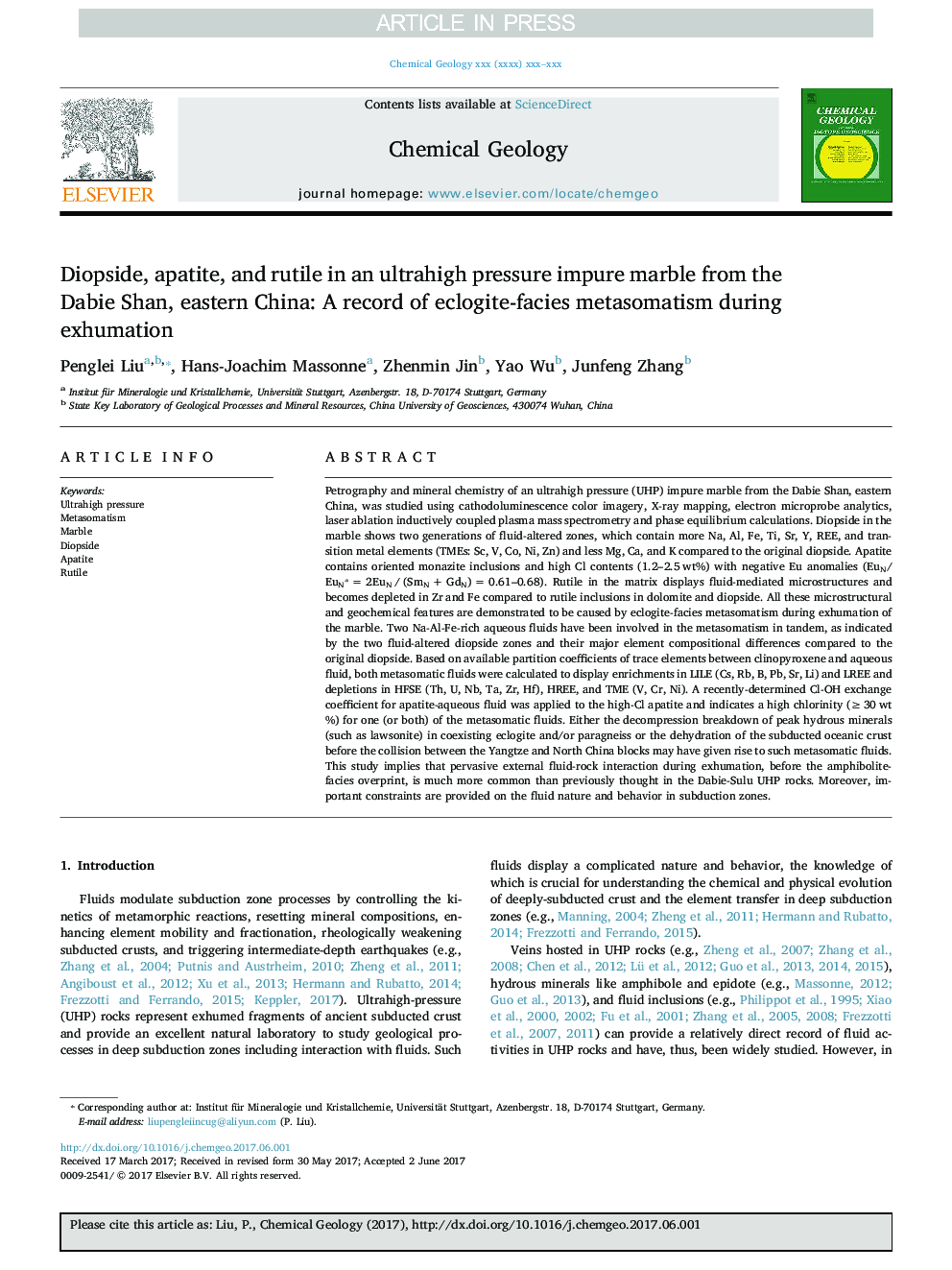| Article ID | Journal | Published Year | Pages | File Type |
|---|---|---|---|---|
| 5782823 | Chemical Geology | 2017 | 17 Pages |
Abstract
Petrography and mineral chemistry of an ultrahigh pressure (UHP) impure marble from the Dabie Shan, eastern China, was studied using cathodoluminescence color imagery, X-ray mapping, electron microprobe analytics, laser ablation inductively coupled plasma mass spectrometry and phase equilibrium calculations. Diopside in the marble shows two generations of fluid-altered zones, which contain more Na, Al, Fe, Ti, Sr, Y, REE, and transition metal elements (TMEs: Sc, V, Co, Ni, Zn) and less Mg, Ca, and K compared to the original diopside. Apatite contains oriented monazite inclusions and high Cl contents (1.2-2.5 wt%) with negative Eu anomalies (EuN/EuNâ = 2EuN / (SmN + GdN) = 0.61-0.68). Rutile in the matrix displays fluid-mediated microstructures and becomes depleted in Zr and Fe compared to rutile inclusions in dolomite and diopside. All these microstructural and geochemical features are demonstrated to be caused by eclogite-facies metasomatism during exhumation of the marble. Two Na-Al-Fe-rich aqueous fluids have been involved in the metasomatism in tandem, as indicated by the two fluid-altered diopside zones and their major element compositional differences compared to the original diopside. Based on available partition coefficients of trace elements between clinopyroxene and aqueous fluid, both metasomatic fluids were calculated to display enrichments in LILE (Cs, Rb, B, Pb, Sr, Li) and LREE and depletions in HFSE (Th, U, Nb, Ta, Zr, Hf), HREE, and TME (V, Cr, Ni). A recently-determined Cl-OH exchange coefficient for apatite-aqueous fluid was applied to the high-Cl apatite and indicates a high chlorinity (â¥Â 30 wt%) for one (or both) of the metasomatic fluids. Either the decompression breakdown of peak hydrous minerals (such as lawsonite) in coexisting eclogite and/or paragneiss or the dehydration of the subducted oceanic crust before the collision between the Yangtze and North China blocks may have given rise to such metasomatic fluids. This study implies that pervasive external fluid-rock interaction during exhumation, before the amphibolite-facies overprint, is much more common than previously thought in the Dabie-Sulu UHP rocks. Moreover, important constraints are provided on the fluid nature and behavior in subduction zones.
Related Topics
Physical Sciences and Engineering
Earth and Planetary Sciences
Geochemistry and Petrology
Authors
Penglei Liu, Hans-Joachim Massonne, Zhenmin Jin, Yao Wu, Junfeng Zhang,
